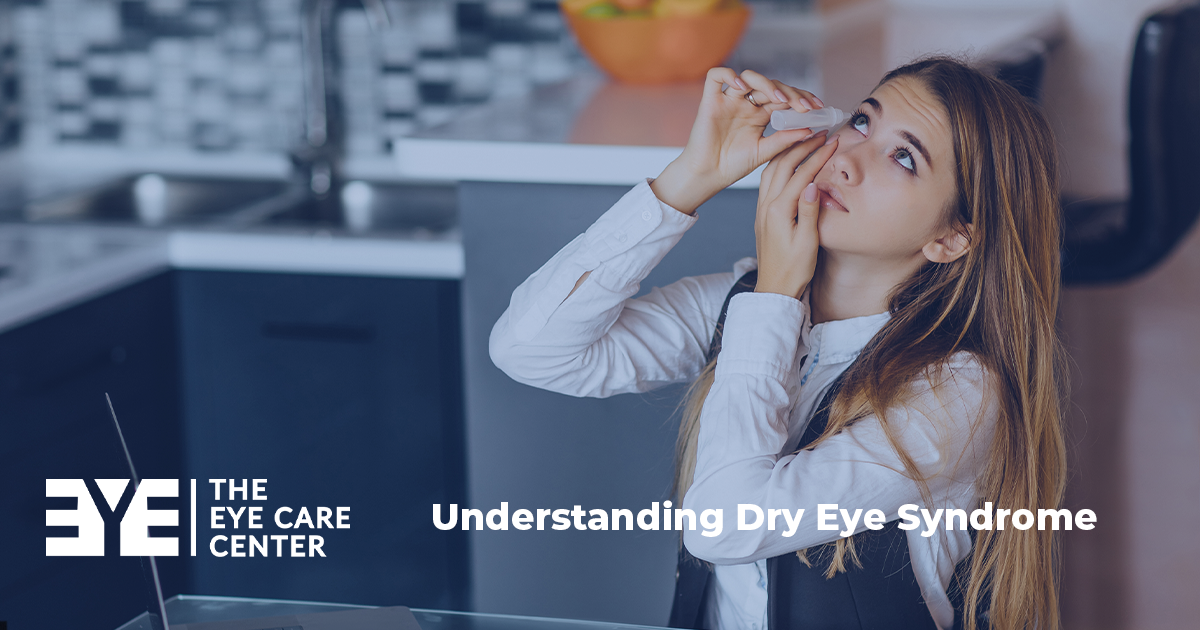July 12, 2022
If you’re one of the 16 million Americans diagnosed with dry eye disease, you’re no stranger to the burning and watering that comes with this chronic eye condition. Dry eye is very common, especially among older adults and women.

Essentially, dry eye syndrome has a direct correlation with tears, as those who suffer from it tend to lack the production of tears needed to properly lubricate and nourish the eyes. Tears play an important part in preventing the front surface of the eyes from drying out and provide much-needed lubrication. Tear also wash away debris and prevent common eye infections.
Dry eyes can be caused by many things including hormone changes, autoimmune diseases, inflamed eyelid glands, and more. Finding the right combination of treatments and lifestyle changes that relieve symptoms can take a lot of time and effort.
The Most Common Symptoms of Dry Eye Syndrome
- Noticeably increased dryness and redness in the eyes
- Discomfort, including itching, scratching, or stinging sensations
- A gradual or increasing sensitivity to light, especially sunlight
- Eyes that water frequently or produce a string-like mucus
- Vision that becomes intermittently blurry or hazy
- A frequent desire to rub the eyes
What Causes Dry Eye to Flare Up?
A flare-up is a temporary episode of discomfort that can last a few days to a few weeks. Knowing what triggers your dry eye flare-up and taking advantage of new medicines and therapies may help you regain relief faster. To give you perspective, a flare-up in a person with dry eye is like an “attack” in a patient who has asthma. In both cases, discomfort may be heightened by the body’s natural immune response. Doctors estimate that about 80% of patients with dry eye experience flare-ups.
Many things can reduce tearing or cause inflammation, triggering a potential flare-up, including:
- Air conditioning
- Wind
- Exposure to low air humidity, such as a long airplane ride
- Uninterrupted screen time (working at a computer, watching TV or scrolling through a phone)
- Prolonged contact lens wear
- Seasonal allergies
Who Is Most at Risk for Dry Eye Syndrome?
While dry eye syndrome is most commonly associated with older adults, it can affect people of almost any age or background. Here are some of the most common risk factors and causes of dry eye syndrome:
- Older adults
- Individuals who do not produce enough tears needed to lubricate the eyes
- An imbalance in the production of materials the body needs to make tears
- Women, due to hormonal changes, menopause, pregnancy, or contraceptives
- Some medications (decongestants, blood pressure medicine, and antidepressants)
- Individuals with diabetes, thyroid conditions, rheumatoid arthritis, eye inflammation
- Lifestyle, including frequent exposure to dust, dirt, debris, smoke, and aerosols
- Those who have worn contact lenses for long periods of time or had Lasik procedures
Tips for Preventing Dry Eyes
- Don’t forget to blink, especially when reading or working at a computer
- Wear sunglasses
- Be sure that you’re getting an adequate supply of healthy oils in your diet
- If you’re not drinking enough pure water throughout the day, increase intake
- If you use fans or heaters, avoid having them blow directly at your face
- With your eye doctor, choose a drop to lubricate your eye
Help is Available!
If you’re concerned about dry eyes, call to set up an appointment with Dr. Anna Rothstein, an expert on this issue. Contact Us or call 585-391-1213.

